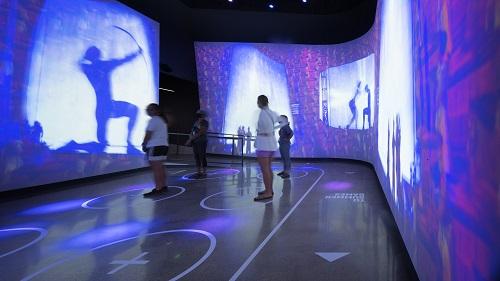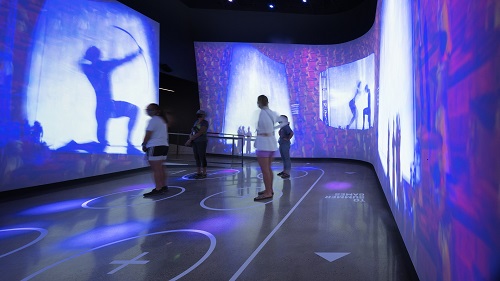

The New York Times recently noted: “[It] does not distinguish between winners or losers; the athletes who earned medals and enduring public adoration at the Games receive the same recognition as those who went home empty-handed. … While most Americans — and television networks and cereal companies — pay far greater attention to the Olympics than the Paralympics, this museum fully integrates them under the assumption that a wheelchair basketball player trains just as hard as any other basketball player. The only categories separating the spotlights on individual sports are summer and winter.”
That sense of equity also extends to the $91 million, 60,000-square-foot facility’s accessibility.
“I was very keen on forcing the design to be equal for everyone,” Ileana Rodriguez, a Houston-based architect and 2012 Paralympian who was hired by Denver-based architecture firm Anderson Mason Dale in association with New York City-based Diller Scofidio + Renfroto work on the project, told The Gazette of Colorado Springs. “It doesn’t matter if you are an athlete or someone that doesn’t do sports, or if you’re someone with a disability, it doesn’t matter. The experience should be the same.”
As the museum’s website emphasizes, guests in need of accessibility assistance may select their services during the registration process. Those services include audio-described video, text-to-speech screen readers, high-contrast screens and larger font-size options, tactile keypads and wheelchair accessibility. Additionally, low-sensory versions of some exhibits and films are available upon request.
Here is how The New York Times describes the visitor experience: “It combines static displays of things like Olympic torches and medals going back to the first modern games in 1896 with high-tech, interactive opportunities to learn about everything from advances in sneaker technology to the evolution of prosthetic limbs to the ways Olympic officials are able to test and catch athletes who dope. … Ramps are low-grade and extra wide to fit two wheelchairs at the same time. Sign language interpreters appear in the corner of videos. Cane guards double as benches in the building’s spacious atrium. In one gallery, where visitors can try out different sports using modified equipment, archers can tell if they are aiming at the target’s center by listening to the speed between audible beeps. Those attempting the luge know if they hit the walls on their run by feeling a subtle vibration in their sleds.”
“I think this building will set a national and international standard for accessibility,” Dick Celeste, former chairman of the U.S. Olympic & Paralympic Museum’s Board of DirectorstoldThe Gazette. “Whether you’re in a wheelchair or sight-impaired or hearing-impaired, you will be able to have an experience that’s essentially the same as an able-bodied person.”
Indeed, Cheryl McCullough, director of sports and special events for Visit Colorado Springs, told Sports Destination Management last fall that the museum will be among the most accessible in the world.
The museum was a decade in the making and is part of the City for Champions project — an unprecedented set of developments approved by the Colorado Office of Economic Development and International Trade in 2013 and spearheaded in part by Visit Colorado Springs. The funding is for the development of five new tourism venues, from the museum to a stadium and arena project to a sports medicine and performance center. In addition to the museum, the William J. Hybl Sports Medicine and Performance Center at the University of Colorado Colorado Springs recently opened its doors.
According to the City for Champions website, the new venues collectively will bring an estimated 1.2 million new visitors to the city each year, including more than 500,000 new out-of-state visitors. They also will increase retail sales by $140 million annually and add $4.4 million in new sales tax revenue for the city each year.
The museum is the first City for Champions project to open, and the facility hosted a Judo Demonstration Day on Oct. 24 in anticipation of World Judo Day on Oct. 28. The event featured U.S. Olympian Ryan Reser leading three demonstrations in the museum’s atrium in front of attendees wearing facemasks. A virtual version of the demonstrations also was available.
The U.S. Olympic & Paralympic Museum is “worth traveling for,” according to Architectural Digest, which in February named it one the “leading design-forward museums opening this year. Smithsonian Magazine, meanwhile, ranked it among the “most anticipated museum openings of 2020.”
The building is open seven days a week – with the exception of a few holidays here and there.
More information is available on the museum’s website.

